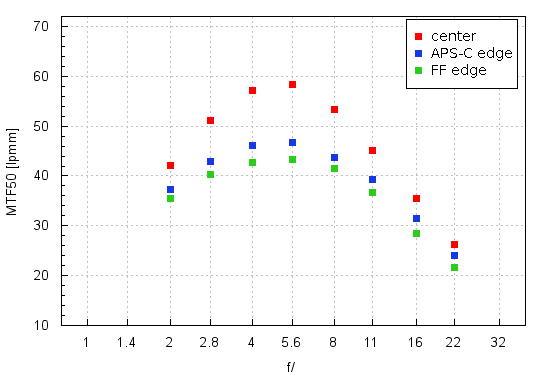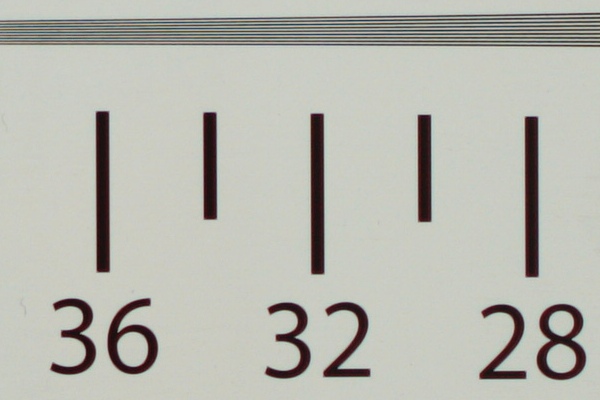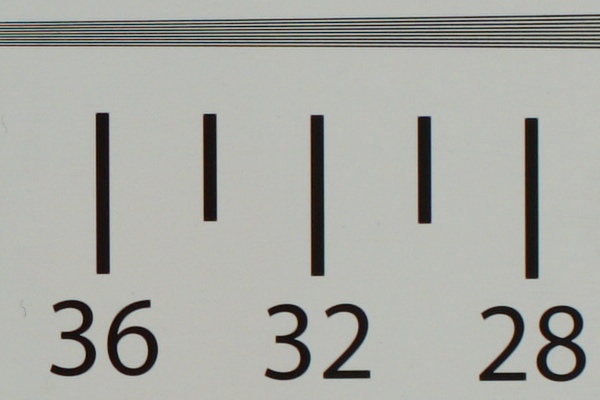Carl Zeiss Batis 25 mm f/2
4. Image resolution
Let’s check how the tested lens compares; its results in the frame centre, on the edge of the APS-C sensor and on the edge of the full frame presents a graph below.

Please Support UsIf you enjoy our reviews and articles, and you want us to continue our work please, support our website by donating through PayPal. The funds are going to be used for paying our editorial team, renting servers, and equipping our testing studio; only that way we will be able to continue providing you interesting content for free. |
- - - - - - - - - - - - - - - - - - - - - - - - - - - - - - - - - - - - - - - - - - - - - - - -
Looking at these results you should perhaps be a bit surprised. The Zeiss brand name suggested MTFs approaching 70 lpmm but in reality they don’t even get near 60 lpmm. They can be still called good but they are hardly impressive. As a kind of consolation even at the maximum relative aperture the images are fully useful, with MTFs distinctly exceeding 40 lpmm.
The situation on the edge seems to be sensible. You are very close to the decency level for both kinds of detectors even with the lens wide open and you exceed it on slightly stopping down the lens to f/2.2–2.5. Perhaps the MTFs don’t increase as fast as you wish they did but the reflex camera Distagon 2/25 and the Nikkor AF-S 24 mm f/1.8G ED fared the same.
To sum up: Zeiss got us used to superior lenses which are able to break resolution records but if you examine the tested device objectively you might find out that this time your expectations shouldn’t be that high. First, the Batis lenses differ from other Zeiss instruments when it comes to materials used in their casings. Their optical construction, not especially advanced, is also a clear indicator there can be no records – even the older Distagon 2/25, designed for reflex cameras, and the elderly Pentax 2/24 had more optical elements. Taking all those factors into account the resolution results are definitely less surprising.
At the end of this chapter traditionally we present crops taken from photos of our resolution testing chart, saved as JPEG files along the RAWs we used for the analysis above.
| A7R II, JPEG, f/2.0 |
 |
| A7R II, JPEG, f/4.0 |
 |






